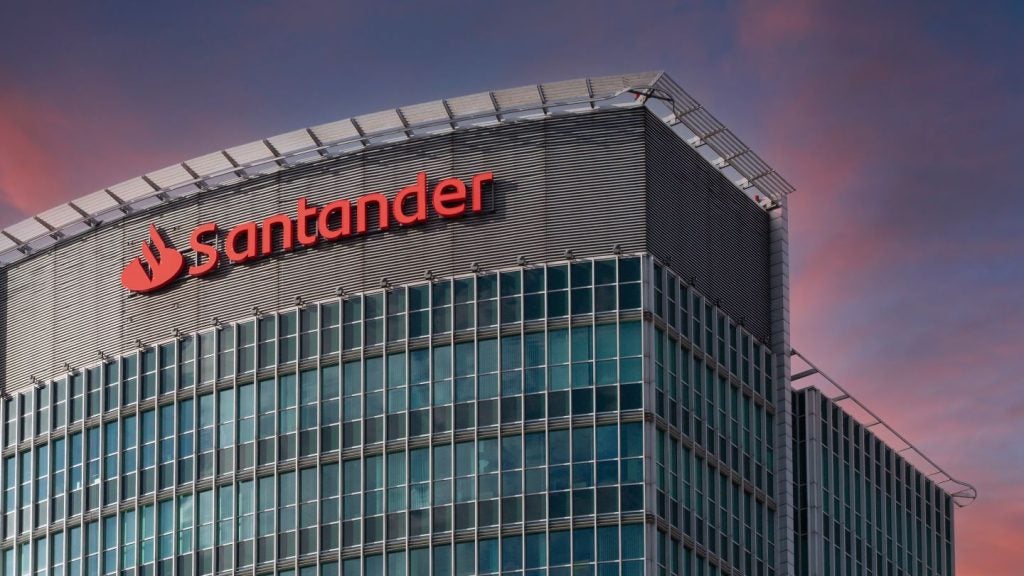Mekong Development Bank (MDB) has launched
Vietnam’s first biometric, fingerprint-enabled debit card powered
by banking software vendor Temenos, that can be used at NCR
SelfServ ATMs across the country. Meghna Mukerjee
talks to MDB, Temenos and NCR about the new product and plans
ahead
Mekong Development Bank (MDB) and banking
software vendor Temenos have launched Vietnam’s first biometric,
fingerprint-enabled debit card.
MDB has implemented Temenos T24 biometric
fingerprint authentication – a first in Vietnam – with the primary
aim of providing the ‘unbanked’ population of Vietnam with access
to banking services.
The lender has already completed the
implementation of Temenos’ T24 core banking systems.
Nicholas Chee, deputy CEO and head of consumer
business at MDB says the “simplicity, customer convenience and
greater security” biometrics provide made the lender opt for the
new debit card.

US Tariffs are shifting - will you react or anticipate?
Don’t let policy changes catch you off guard. Stay proactive with real-time data and expert analysis.
By GlobalData“In an emerging market such as Vietnam, where
only 20% of the population has a bank account, it is vital to
provide higher standards of security and yet balance that with
simplicity and convenience. Biometrics allows MDB to achieve all
these in an intuitive manner.
“There is a low penetration of bank accounts
in Vietnam and many consumers tend to forget their debit card or
ATM pins thereby making it more susceptible to fraud. With
biometrics, everything is at the customer’s fingertips.
“From a cost saving perspective, we do not
have to re-issue PIN numbers whenever a customer forgets it.”
Accessibility is one of the “key concerns” for
customers to open a bank account in Vietnam – a deposit account
being the main entry-level product for banks targeting a bigger
retail consumer base, according to Chee. The biometric debit card
enables MDB to provide a “simple way for customers to access their
banks accounts anytime” and allows MDB to tap into the unbanked
market, adds Chee.
“It makes banking simplistic while employing
high security standards as compared to traditional banking methods
whereby high security controls typically compromise customer
experience, making it less seamless and increasing the barriers of
customer engagement.”
Chee informs that the primary age group of MDB
customers is between 20 years and 40 years and Lee Volante,
director business solution group Asia-Pacific for Temenos, points
out biometric-debit-cards also work well in attracting the young
customer demographic in Vietnam as biometrics can assist in
reaching out to this customer segment “more efficiently and
effectively”.
“Vietnam is a fast growing economy. Vietnam
has a very young population and younger people accept technology
more readily. Also the ability to offer more convenient banking
services to people who have not traditionally had banking
facilities is a tremendous opportunity for growth.
“Whether it is through microfinance banking or
traditional banking services, there a big opportunity now for banks
to expand their customer base and the only cost effective way for
banks to do that is through making a clear identity for a lot of
these people.”
Customer fingerprints are captured by MDB at
the point of opening an account and can be used at any one of 33
NCR SelfServ ATMs across Vietnam.
Phylippa Smithson, software security
consultant at NCR, says:
“NCR was a pioneer with biometric [iris]
recognition at ATMs 14 years ago for UK’s bank Nationwide Building
Society. In 1998, a lifetime ago in technology terms, the
technology was perhaps a little ahead of its time and was not cost
effective for widespread deployment.
“Since then, we have sold biometric
fingerprint recognition ATMs in South America, India and the Middle
East for a number of years. Vietnam is a fast-growing market and,
as we are seeing in a number of emerging markets that are not
burdened by a technology legacy, the country is bringing innovative
solutions such as MDB’s biometric ATMs to market quickly.
“To many of the world’s unbanked, technology
can be an intimidating barrier, but removing the need to carry a
card or remember a PIN makes for a simpler, more accessible
transaction.”
Adoption rates of the new technology have been
high as well. According to MDB, since the initial launch of the
biometric-enabled debit card in June, the lender’s current account
base has tripled and the deposit balance per debit card linked
account is two times higher than a regular account.
“This is mainly due to customers’ confidence
in the ease of accessing their money due to this new feature
offered by MDB. Incorporating the technology at NCR SelfServ ATMs
across Vietnam ensures that customers experience consistent
biometric fingerprint capabilities throughout the country.
“We carried out a survey and 90% of the
customers we surveyed have indicated that they are impressed with
the technology and simplicity of the new biometric debit card. Over
90% would strongly recommend it to their family, relatives and
friends, which is a strong testament of customer approval,” says
Chee.
T24 biometrics is, reportedly, in use at
financial institutions across Africa, with MDB being its first
Asian customer to adopt the biometric authentication.
“In terms of biometric debit cards this is the
first one to go live for Temenos – there are some more clients in
Africa waiting to go live. Finger print scan is significantly more
secure than a password that can be lost or stolen.
“The other piece that is equally valuable, and
probably the greater driver, is biometrics making it more
convenient for the banks to serve their customers. We see this
particularly in emerging markets. Biometric technology makes it
easier for customers to identify themselves to the bank staff when
they come in to any of the bank branches,” says Richard Thomas
project manager T24 biometrics at Temenos.
Biometric identification and authentication
can remove an inhibiting barrier to card-based or self-service
banking among the unbanked, stresses Smithson, leading to increased
trust and confidence not just in banking but in the individual
bank’s brand.
“Among all consumers, the extra security is
highly valued. People like to know that their money is safe,” she
adds.
In Western Europe and North America 80% people
have traditional bank accounts.
Adoption of biometric technology is faster in
emerging markets at present and Thomas says one dynamic responsible
for that is Western Europe and North America having several
regulations associated with commercial businesses capturing finger
print data and that complicating the situation in terms of how
finger print scans are managed. “It can be done but there are very
specific rules and processes one needs to follow. There are less of
those concerns in a lot of those developing markets.
“From a security and fraud perspective there
are numerous systems in place in banking institutions in developed
markets and a lot of these checks and balances are not in place in
many emerging economies. Using technology like biometrics to manage
that has much greater value in developing markets,” says
Thomas.
Plans are in place for MDB to extend this
biometric capability to other touch points as well over the next
few months.
“We will be looking at enhancing many of our
various channels such as the branch, internet banking, cash back
facilities at partner outlets, self service kiosks with biometric
services. Other products and services are coming soon too,” says
Chee.
Temenos has also developed biometric
capabilities on a Point of Sale (POS) device and customers can be
identified and allowed to carry out transactions directly on the
POS devise after a single enrolment inside the bank.
“After the bank has got the customers thumb
print, that customer can interact with the bank across any of the
channels using the same fingerprint,” says Thomas.
The spread of biometrics in general will
continue across a range of applications, but as with all new and
emerging technologies, universal adoption depends upon everyone
agreeing to a set of standards, “and that takes time”, says
Smithson.
“The drivers for biometrics are various,
including security to protect against card fraud – especially card
skimming, inclusion – making banking easier and more accessible to
the unbanked, legislation – making banks liable for fraudulent
transactions, and competitive differentiation – to appeal to a
younger or more tech-savvy demographic. Widely accepted standards
are key drivers of technology adoption,” Smithson adds.
Biometric services are part of the larger
Temenos’ T24 core banking unit and that is the “unique” edge that
T24 has in comparison to its competitors, according to Thomas.
“The implementation of the system can be
quick, depending o the components of T24 that the bank wants to
implement. It can be anything between 30 days to three months to
get a customer up and running on the system.
“There are many biometric platforms for the
bank to interact on – one of them is the ATM and debit cards. The
team at MDB is looking at some other parts of the system as well.
With T24, we have really built an enterprise wise biometric
technology solution for the bank that they can use for both
customers and employees. Employees can use this system for logins
and increase security and progress as well.” says Thomas.
Chee says the retail banking market in Vietnam
is highly competitive with local banks such as Techombank and
Sacombank being the leaders in terms of “foreign expertise and
market share”.
“In the major cities in Vietnam competition is
such that interest rates can change on a frequent basis – daily at
one point of time. Deposit rates were as high at 18%-20% until the
government stepped in to regulate the rates to 9% as they are
currently. There is no clear product differentiation other than
price. Hence this is where MDB intends to differentiate itself
through our service offers and customer experience,” says Chee.
Plans ahead for MDB include growth as a retail
bank in Vietnam while complying to international standards with
over 175 branches across the country. “The target segment approach
is key, which is being supported throughout our IT architecture to
offer customer centric solutions,” says Chee.
“Just like our tag line for our new debit card
indicates, “Everything at your finger tips”. This mainly means our
products and services will be designed to be personal, secure,
simple and convenient,” adds Chee.
Founded in 1992, MDB re-launched in 2009 under
a new brand and has a network of 48 branch and outlets across
Vietnam, with a shared ATM network of over 20,000 under the
Smartlink system. The lender’s staff strength is over 1,200.







